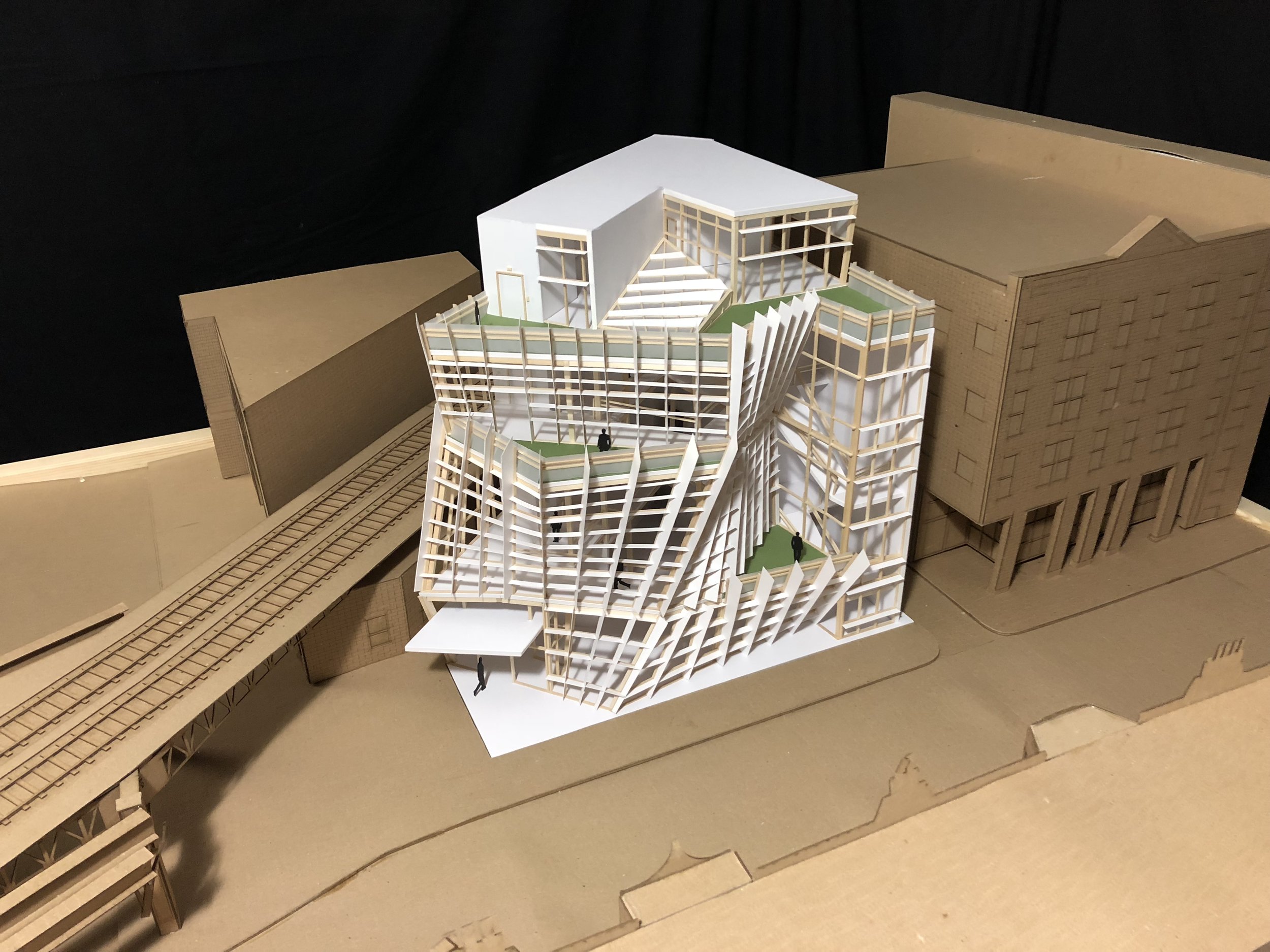






The objective of this project was to design a gallery, studio, and artist’s residence in the River North Gallery District in Chicago. Three pieces of artwork were chosen, and a gallery space had to be designed for each of them plus an installation gallery for temporary exhibits for the artist in residence.
The first piece of artwork chosen was a sculpture by Donald Judd called “Untitled.” A large space was designed for the artwork and was hidden from the outside. It is located next to the train so passengers may catch a glimpse of the artwork, but would have to come to see what the people inside the gallery are looking at. The second piece was a cultural artifact of a Burden Basket made by the Pomos, a Native American tribe located in California. The gallery space for this piece was hidden in the back and had a low ceiling to create an intimate space and is small enough so viewers can be up close and experience the small details of the work. The final piece was a painting called “Interchanged” by Willem de Kooning and this piece is in an area with controlled lighting to preserve it and is the first piece people traveling up to the second floor see.
The main concept for the design of the building was plate tectonics. Floor plates were manipulated to act as shifting plates that were lifted up and down to create sublevels within each main level. Ramps and steps leading to each of these spaces created access to terraces on varied levels and overall, created movement. The outdoor terraces gave views to people on other levels and also unified them by providing all of them views to the city. The open atrium in the upper floors created lines of sight to other galleries on other levels and allowed viewers to witness the movement of floor plates as people used the space.
The design for the facade became a series of angled sunshades due to the uneven matching of the floor plates. The large, vertical sunshades gave ample shade in one direction, but created a visual hierarchy in comparison to the smaller, horizontal sunshades throughout the exterior. The horizontal shades protected the interior more often throughout the day, but visually contrasted with the vertical shades, giving a delicate appearance.

